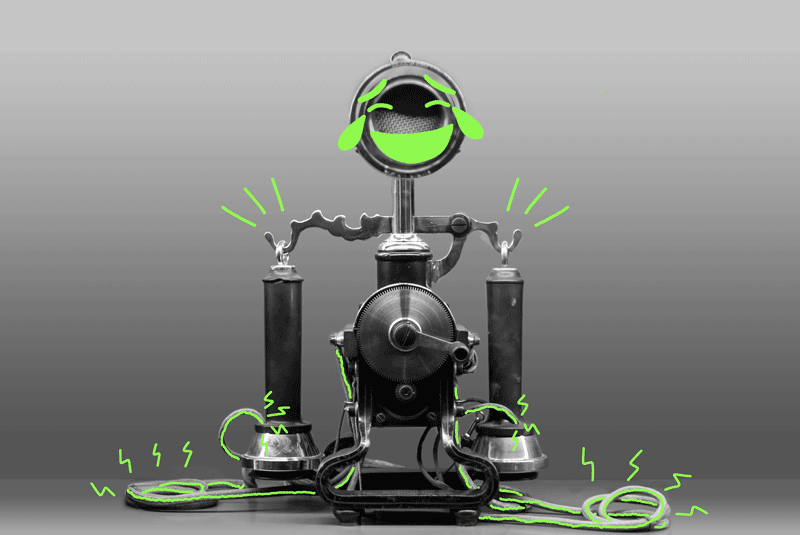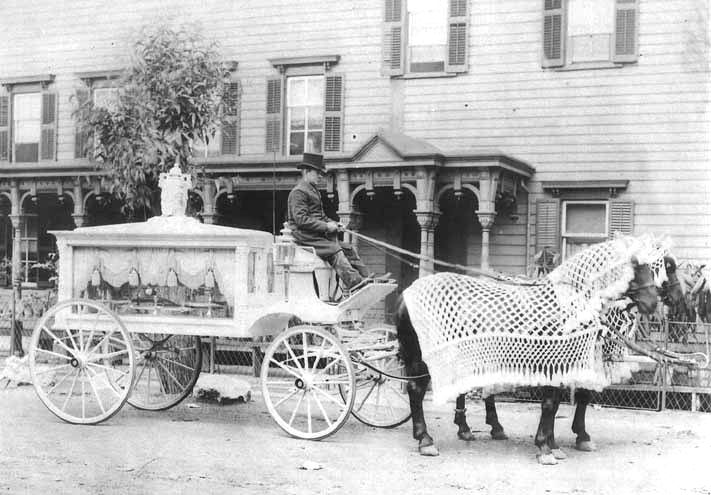The First Prank Calls Were Surprisingly Morbid
Some things never change.

Every day leading up to April 1, we’re telling the story of one ridiculous historic prank. Find more here.
It’s 1884. An undertaker sits at his desk at a funeral home in Providence, Rhode Island. Suddenly, his telephone rings, splitting the silence. “Mr. Smith is dead,” gasps the voice on the end of the line. “Please come quickly.” The voice gives an address, and the undertaker rushes out, loads up his tools, and speeds over.
When he arrives at the prescribed location, though, who should answer the door… but Mr. Smith himself! The undertaker has been fooled. He hangs his head and goes back to his office. And the next time the telephone rings, he thinks twice before he trusts it.
Nowadays, a call from an unknown number elicits immediate suspicion. But in 1884, the telephone was only eight years old. The scenario above, which was described in the February 2, 1884 issue of the journal Electrical World, appears to be the first prank phone call ever recorded.

“Some malicious wag… has been playing a grave practical joke on undertakers, by summoning them over the telephone to bring freezers, candlesticks and coffins for persons alleged to be dead,” the article reads. “In each case the denouement is highly farcical, and the reputed corpses are now hunting in a lively manner for that telephonist.”
As historian Paul Collins details in an article in Defunct, whoever invented the prank call was braver than today’s bored teens. “All calls were routed through operators, and the most anonymity one could get was in the payphones prominently displayed in drugstores and hotel lobbies,” he writes.
This, he continues, did not stop jokesters from embracing and improving on the genre: By the early 1900s, pranksters were using “While You Were Out” slips to trick people into becoming prank callers themselves. They’d leave a message saying that a particular person had telephoned, and how that person supposedly could be reached. When the victim returned the call, they’d find themselves asking for, say, a Mr. Train at Union Station, a Mr. Fish at the New York Aquarium, or—in Providence again—a Mr. Graves at the North Burial Ground.

All such variants proved extremely popular. The Museum of Hoaxes has a whole page dedicated to April Fool’s Day prank-calling sprees. A certain macabre streak runs through them: In 1920, the Milwaukee city morgue was apparently tied up so long fielding calls for Mr. Graves and Mr. Stiff, they “failed for an hour and 45 minutes to inform the coroner of the death of a patient.”
Five years later, so many undertakers in Reno, Nevada, got prank calls asking “Someone there want me?” that they apparently started responding “If you’re a dead one, yes.” By April 1, 1959, the person who answered the phones at Chicago’s Cook County Morgue estimated he was getting four or five prank calls per minute.
The identity of that first inspired caller has been lost to history. But the morbid trend he started will probably never die.














Follow us on Twitter to get the latest on the world's hidden wonders.
Like us on Facebook to get the latest on the world's hidden wonders.
Follow us on Twitter Like us on Facebook